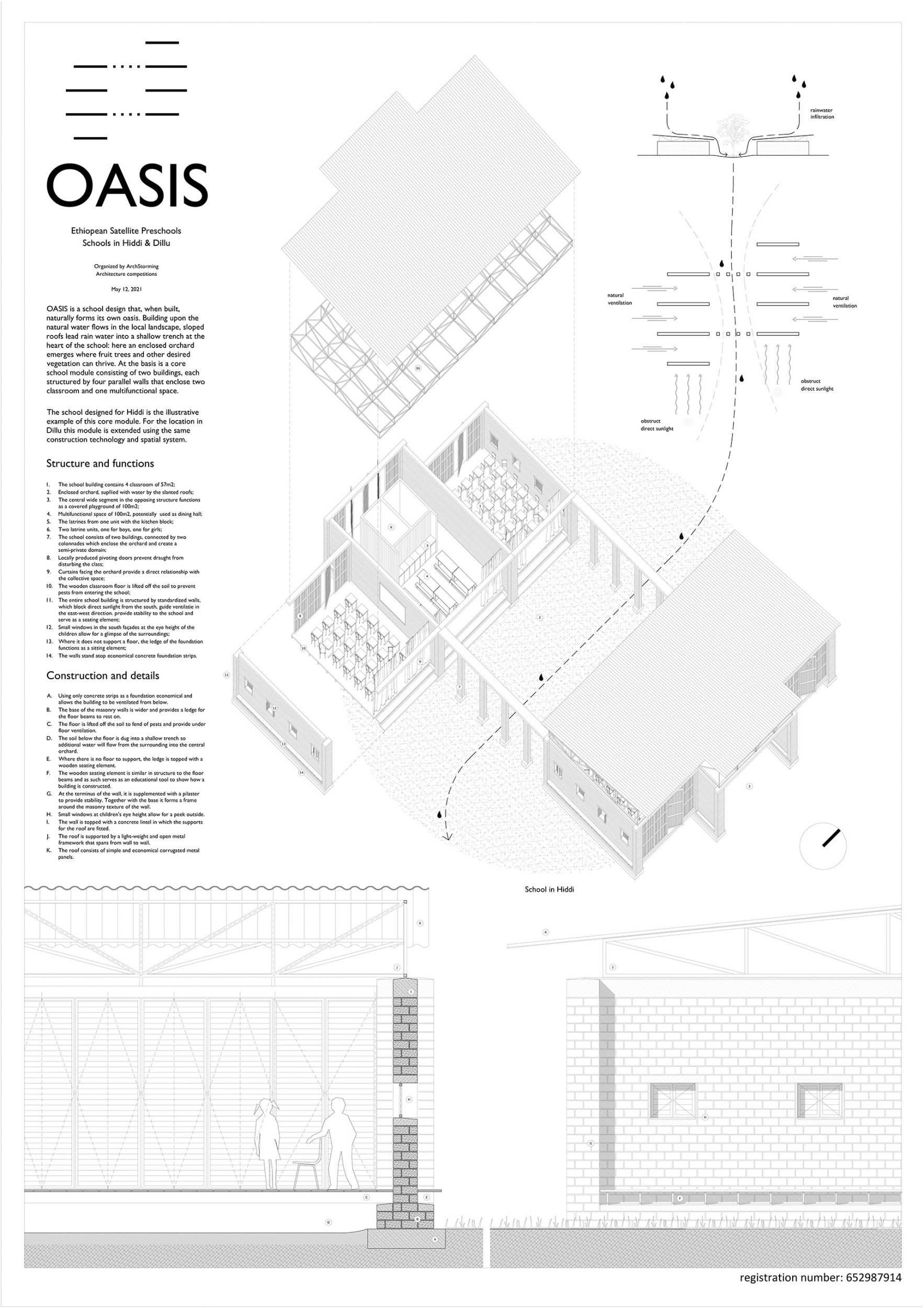Ethiopean Satellite Preschools
Schools in Hiddi & Dillu
OASIS is a school design that, when built, naturally forms its own oasis. Building upon the natural water flows running north-south in the local landscape, sloped roofs lead rain water into a shallow trench at the heart of the school: here an enclosed orchard emerges where fruit trees and other desired vegetation can thrive. As such OASIS can become a self-sufficient institution and in fact enhance the existing irrigation of the surrounding agricultural fields. When needed, the school can be extended following the length of the irrigated orchard and using the same construction techniques.
At the basis is a core school module consisting of two buildings, each structured by four parallel walls that enclose two classroom and one multifunctional space. While the school gathers and stores water in the wet season, the walls provide shade and ventilation in the dry season. Because of their orientation, the walls shield off the direct sunlight from the south while allowing for natural cross-ventilation in the east-west direction. Wooden floors are lifted off the soil and supported by the foundation of the walls, fending off unwanted pests and facilitating additional ventilation from below. Roofs are also lifted above the walls using a light-weight metal framework. As opposed to conventional school buildings in the area, the classrooms in OASIS are open on two sides leading to a more pleasant spatial experience. On the outside of the school, the façade is closed using locally crafted wooden pivoting doors, making it possible to close the classroom to draught or outsiders. On the side of the collective orchard the classrooms have a more open character, only separated by curtains.
Much effort has gone into creating richness in the design, so the school can be both a container of knowledge and an educational instrument in itself: where the foundations need not support the wooden floor beams, a seating element is created that illustrates the cross-section of the floor. Similarly, the orchard can be used to teach about biology and agriculture, and the curtains and pivoting doors can serve as example of local craftsmanship.
The design has been presented deliberately devoid of color, since it is meant to be able to absorb any locally available brickwork or cinder blocks, woodwork, textiles and roofing, depending on the given location. In fact, variety in the material choice would provide the NGO with a diverse and colorful set of school buildings that can serve to irrigate, educate and congregate.


